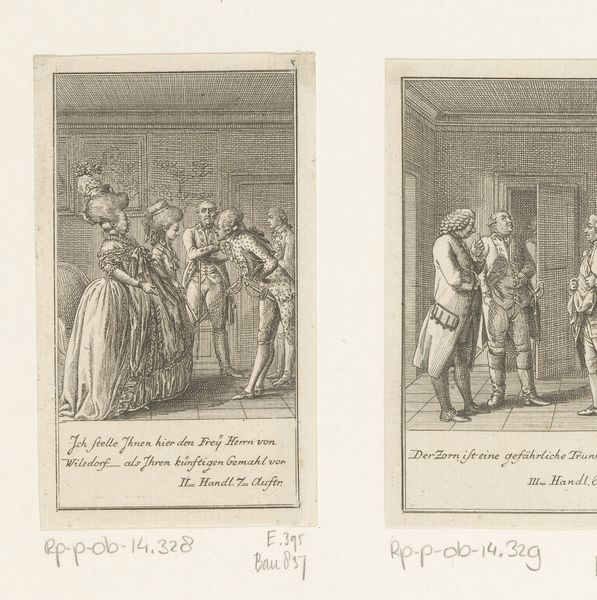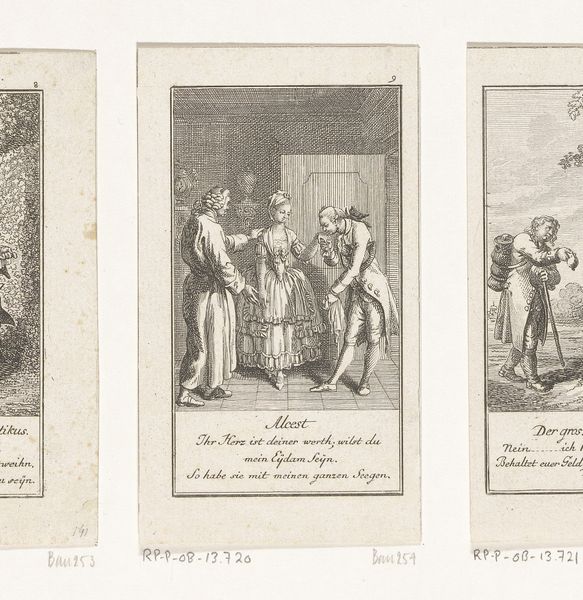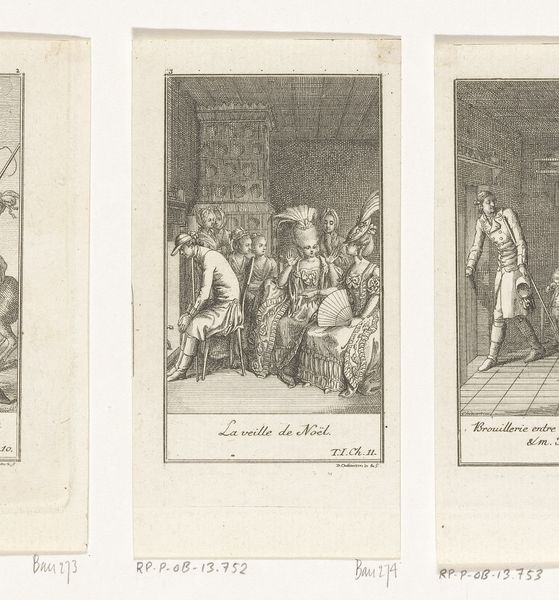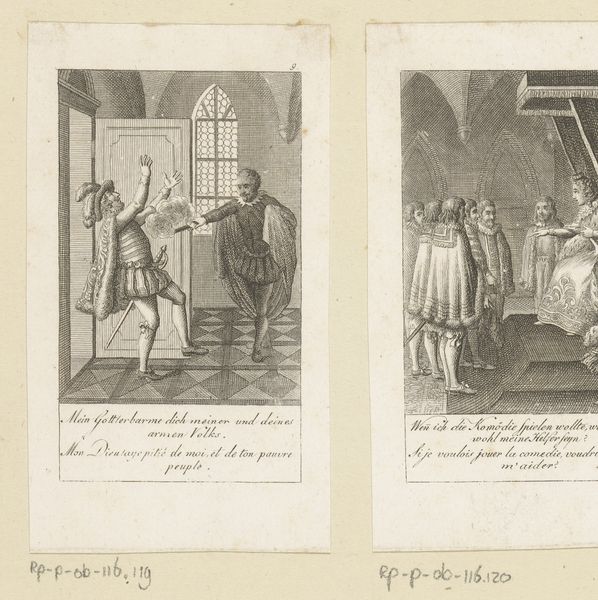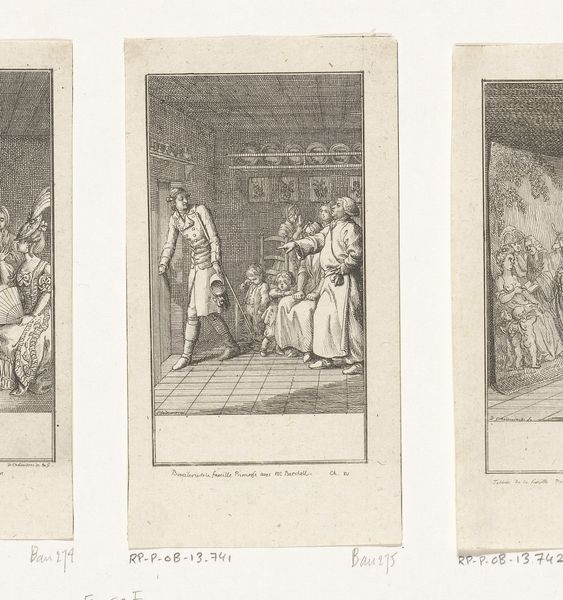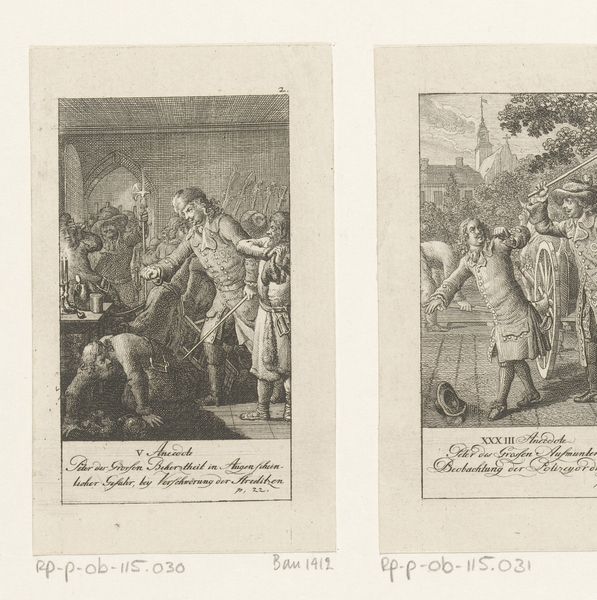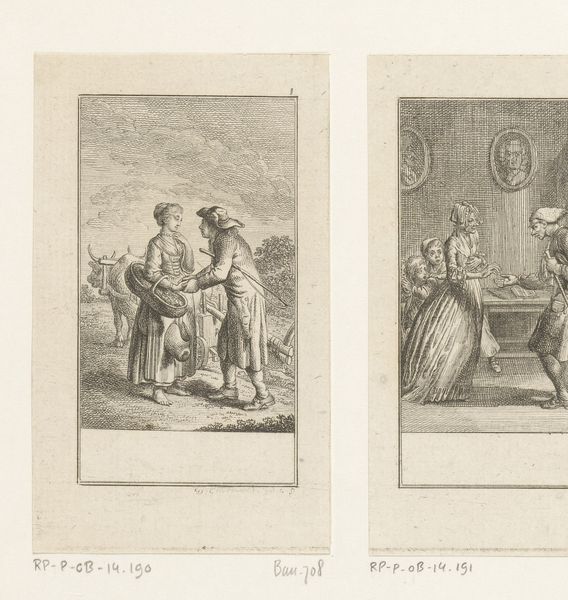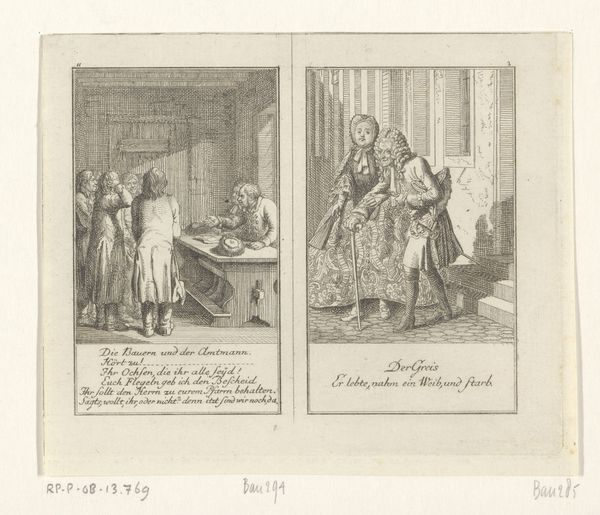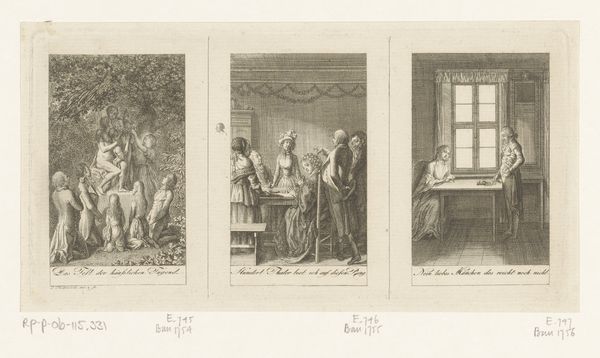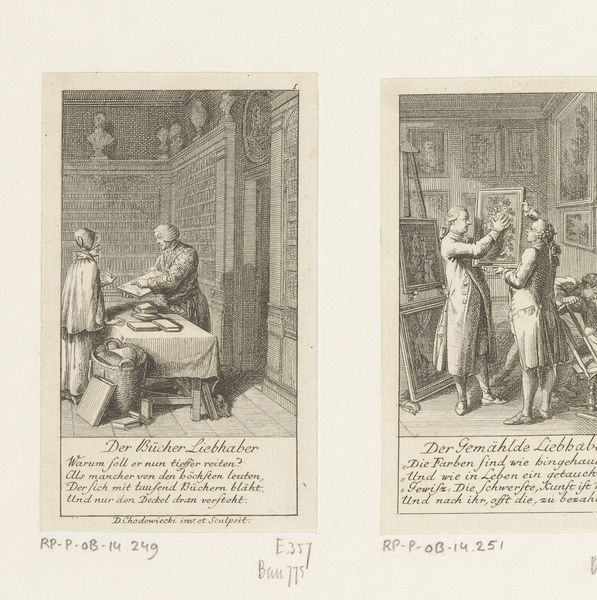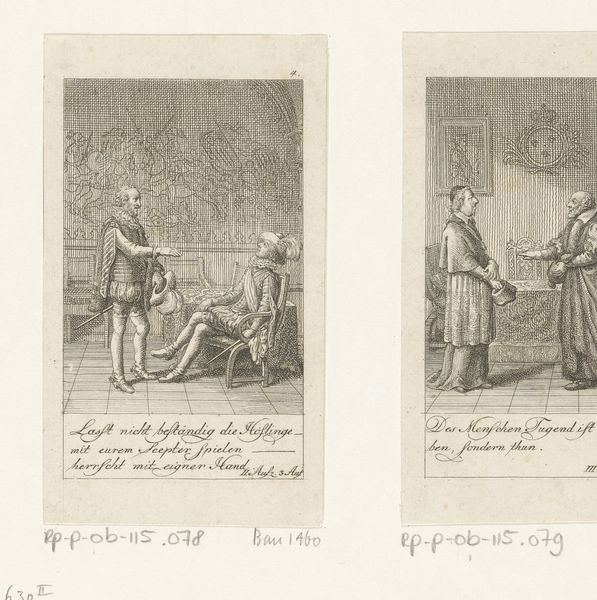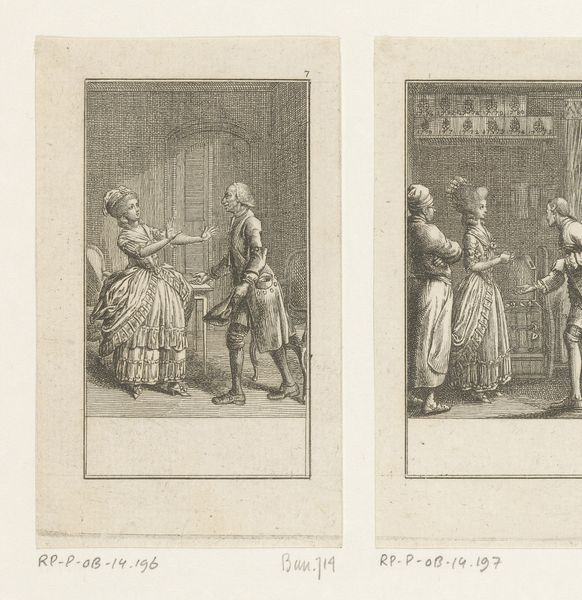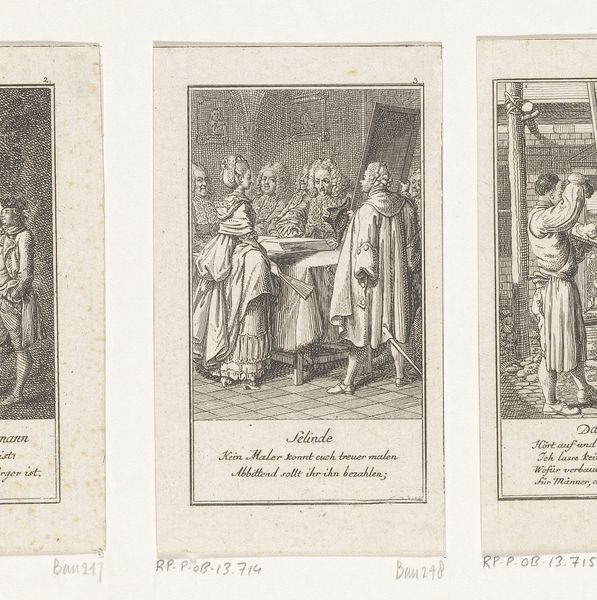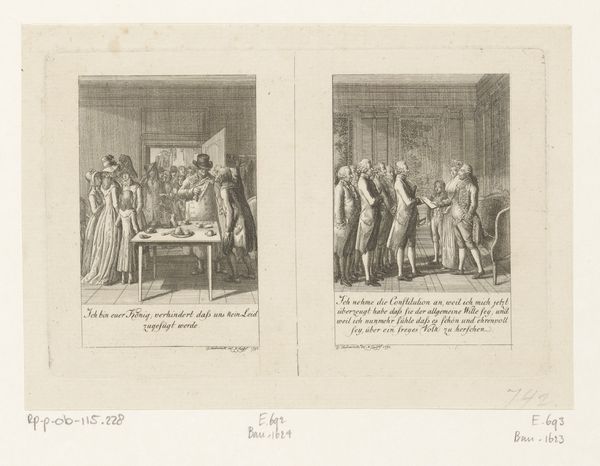
Dimensions: height 104 mm, width 62 mm
Copyright: Rijks Museum: Open Domain
Curator: This print, crafted by Daniel Nikolaus Chodowiecki in 1789, is entitled "Peter the Great Pushes the Architect Against the Wall." It’s currently held here at the Rijksmuseum. Editor: It's incredibly linear, as one might expect from an engraving. Stark blacks and whites create an immediate sense of drama, a claustrophobic tension almost. Curator: Precisely. Chodowiecki, adhering to Baroque sensibilities, masterfully uses line to direct our gaze. Notice the dynamic composition—the forceful gesture of Peter the Great contrasted with the architect’s rigid posture. The linearity amplifies the emotional starkness, would you agree? Editor: Agreed, but I’m drawn to the labour implicit in engraving. Think about the intense concentration and physical exertion required to incise those fine lines onto the copperplate. Each line represents hours of dedicated work. We are witness to the process, the handmade quality offering insight into the creator's process. Curator: A relevant point. However, the engraving is more than the sum of its physical creation. Consider its narrative function; It's a political anecdote transformed into a potent visual statement. The carefully constructed lines portray power dynamics, hierarchy, and control, revealing social truths with remarkable precision. The almost mathematical placement is not arbitrary. Editor: Perhaps. Though, reflecting on printmaking practices, multiple impressions could be produced with such relative ease, challenging art's traditional aura. Was this accessibility part of Chodowiecki's intent or commentary on autocratic authority through reproducible images of the Czar? Curator: An intriguing point about its reproducibility challenging the singular aura. Ultimately, however, Chodowiecki delivers, with clarity, an artwork rooted in powerful imagery and sharp technical precision. Editor: And through the labor-intensive process, a clear insight into the working of a Baroque printmaker, merging labour, narrative, and the politics of representation.
Comments
No comments
Be the first to comment and join the conversation on the ultimate creative platform.
